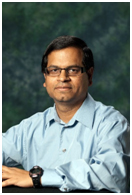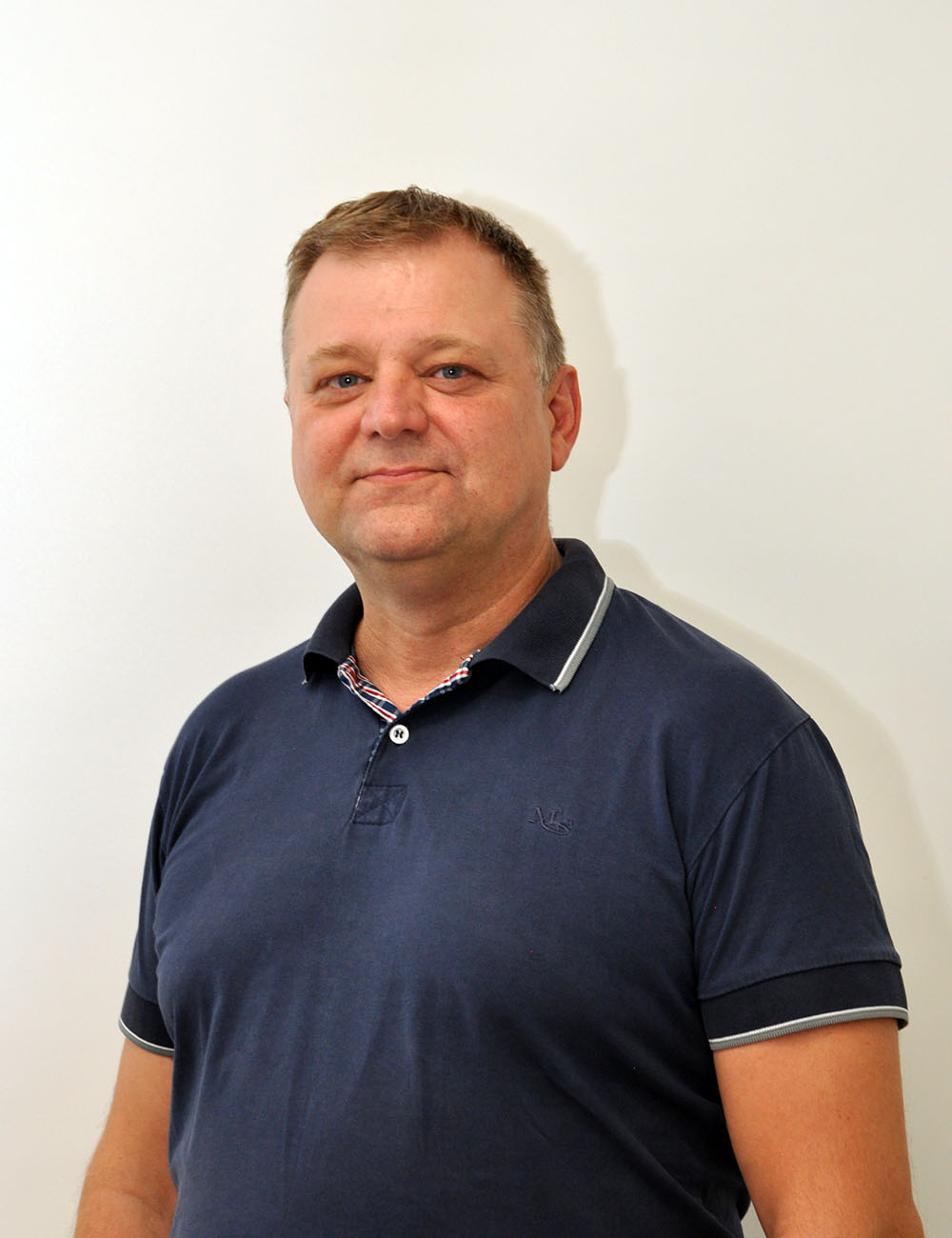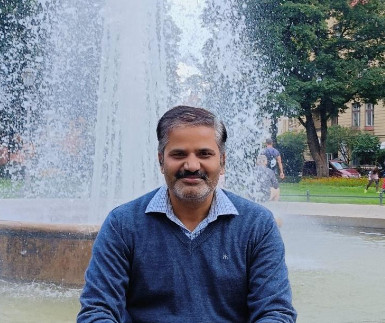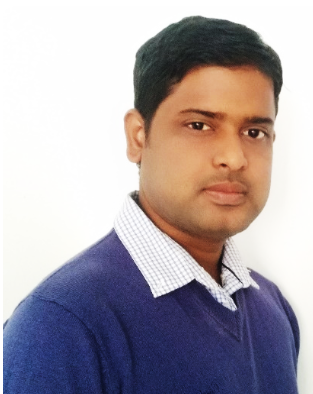Keynote
Everything You Wanted to Know About Smart Agriculture
Saraju P. Mohanty
Department of Computer Science and Engineering
University of North Texas, Denton, TX 76207, USA.
Homepage: http://www.smohanty.org/
Email: saraju.mohanty@unt.edu
Abstract: The world population is soon going to reach the 8 billion mark to cause a rapid increase of food demand. It is observed that socio-economic and well-being fallout affects food security. However, the amount of land that is cultivable has been significantly decreasing for various reasons, such as rapid urbanization. To cater to the needs of the increasing population with reduced farmland, the agricultural industry is evolving to become efficient and smart. Traditional agriculture needs to adopt technologies to be efficient, sustainable, eco-friendly, leading to smart agriculture. This talk will present the technological trends and challenges in smart agriculture. How the Smart Agriculture made of Agriculture Cyber Physical Systems (A-CPS) are built upon the Internet-of-Agro-Things (IoAT) will be discussed through different applications. The talk will focus on technologies, such as Artificial Intelligence (AI) which supports automation, along with the Distributed Ledger Technology (DLT) and Security-by-Design (SbD) which provides agriculture data integrity and security. The talk will address many questions about smart agriculture including: (1) Trends of Agriculture. (2) What is IoAT and A-CPS? (3) What are the challenges of design and operation of smart agriculture? (4) What are AI solutions for smart agriculture? (5) What are cybersecurity solutions for smart agriculture? (6) What are some smart agriculture examples?
Speaker Biography:
 Dr. Saraju P. Mohanty is a Professor at the University of North Texas. Prof. Mohanty’s research is in “Smart Electronic Systems” which has been funded by NSF, SRC, US Air Force, IUSSTF, and Mission Innovation. He has over 20 years of research experience on security and protection of media, hardware, and systems. He introduced the Secure Digital Camera in 2004 with built-in security features designed using Hardware Assisted Security (HAS) or Security by Design (SbD) principle. He is widely credited as the designer for the first digital watermarking chip in 2004 and first the low-power digital watermarking chip in 2006. He has authored 450 research articles, 5 books, and 10 granted and pending patents. His Google Scholar h-index is 56 and i10-index is 234 with 12,000 citations. He is a recipient of 16 best paper awards, Fulbright Specialist Award in 2021, IEEE Consumer Electronics Society Outstanding Service Award in 2020, the IEEE-CS-TCVLSI Distinguished Leadership Award in 2018, and the PROSE Award for Best Textbook in Physical Sciences and Mathematics category in 2016. He has delivered 21 keynotes and served on 14 panels at various International Conferences. He has been serving on the editorial board of several journals, including IEEE Transactions on Bigdata and ACM Journal on Emerging Technology in Computing. He was the EiC of IEEE Consumer Electronics Magazine during 2016-2021. He is Section-EiC for Springer-Nature of Computing Science since 2020. He served as the Chair of the IEEE-CS Technical Committee on VLSI during 2014-2018 and served on the Board of Governors of the IEEE Consumer Electronics Society during 2019-2021. He is the steering committee chair/vice-chair for the IEEE International Symposium on Smart Electronic Systems, the IEEE-CS Symposium on VLSI, and the OITS International Conference on IT. He has mentored 3 post-doctoral researchers, and supervised 15 Ph.D. dissertations, 26 M.S. theses, and 20 undergraduate projects.
Dr. Saraju P. Mohanty is a Professor at the University of North Texas. Prof. Mohanty’s research is in “Smart Electronic Systems” which has been funded by NSF, SRC, US Air Force, IUSSTF, and Mission Innovation. He has over 20 years of research experience on security and protection of media, hardware, and systems. He introduced the Secure Digital Camera in 2004 with built-in security features designed using Hardware Assisted Security (HAS) or Security by Design (SbD) principle. He is widely credited as the designer for the first digital watermarking chip in 2004 and first the low-power digital watermarking chip in 2006. He has authored 450 research articles, 5 books, and 10 granted and pending patents. His Google Scholar h-index is 56 and i10-index is 234 with 12,000 citations. He is a recipient of 16 best paper awards, Fulbright Specialist Award in 2021, IEEE Consumer Electronics Society Outstanding Service Award in 2020, the IEEE-CS-TCVLSI Distinguished Leadership Award in 2018, and the PROSE Award for Best Textbook in Physical Sciences and Mathematics category in 2016. He has delivered 21 keynotes and served on 14 panels at various International Conferences. He has been serving on the editorial board of several journals, including IEEE Transactions on Bigdata and ACM Journal on Emerging Technology in Computing. He was the EiC of IEEE Consumer Electronics Magazine during 2016-2021. He is Section-EiC for Springer-Nature of Computing Science since 2020. He served as the Chair of the IEEE-CS Technical Committee on VLSI during 2014-2018 and served on the Board of Governors of the IEEE Consumer Electronics Society during 2019-2021. He is the steering committee chair/vice-chair for the IEEE International Symposium on Smart Electronic Systems, the IEEE-CS Symposium on VLSI, and the OITS International Conference on IT. He has mentored 3 post-doctoral researchers, and supervised 15 Ph.D. dissertations, 26 M.S. theses, and 20 undergraduate projects.
Advanced development of hemodialysis system with predictive fluid balance in body for kids
Vladimir M. Mladenovic
Faculty of Technical Sciences in cacak, Department of Information Technology
University of Kragujevac, Svetog Save 65, Cacak, Serbia
Homepage: http://www.ftn.kg.ac.rs/vladimir.mladenovic/en
Email: vladimir.mladenovic@ftn.kg.ac.rs
Abstract: A balanced state of the fluid in the body represents the essence of hemodialysis therapy (HD). It contributes to the prevention of hypo-and hyper-hydration, which can have a significant effect on long-term cardiovascular complications, reduced cardiac efficiency, and the like. HD refers to a process that removes excess fluid from the patient's body, whose kidney function is reduced or completely absent and is usually achieved by ultrafiltration. Unfortunately, there are no typical rules for this, and many clinical doctors, in addition to the individual parameters they monitor, evaluate the complete HD process in accordance with many years of experience and personal perception. This study aims to predict overhydration in the hemodialysis process using Artificial Neural Network. Dehydration has negative impacts on both physical and mental health, as is well-known. Overhydration's possible negative effects are, however, less known. A balanced state of the fluid in the body represents the essence of hemodialysis therapy. The prediction of volume-related adverse events has shown potential when using machine learning techniques. Several factors could influence overhydration, such as weight, blood pressure, lean tissue index, fat tissue index, body mass index, total body water, extracellular water, adipose tissue mass, body cell mass, and bioimpedance. The objective is to use an artificial neural network to estimate overhydration more accurately than current methods, which rely on measurable factors and the physician's judgment. The training and testing processes are explained, as well as the development of the artificial network model. The model achieved satisfactory results.
Speaker Biography:
 Dr. Vladimir M. Mladenovic is a Professor at the Faculty of Technical Sciences in Cacak, University of Kragujevac. Prof. Mladenovic’s research is in Artificial intelligence (machine learning, neural networks, deep learning, computer vision),Wireless communication, IoT, and Symbolic computation and processing. He has industrial experience as Senior AI architect and 5G Service solution expert working as consultant for companies such as Huawei in Serbia and Yettel mobile operator. He is a head of digital innovation lab at the Faculty of Technical Sciences and has over 15 years of research experience on wireless communications and signal processing and systems. He has authored more then 100 research articles, 10 books, and 20 patents. His Google Scholar h-index is 10 and i10-index is 10 with 330 citations. He has delivered 10 keynotes at various International Conferences. He has been serving on the guest, assistant and review editorial board of several journals, including IEEE Access, Serbian journal of electrical engineering (SJEE), and Frontiers in Artificial Intelligence. He has mentored 1 post-doctoral researchers, and supervised 2 Ph.D. dissertations, more then 20 M.S. theses. He has manage and participate in 9 national and international projects.
Dr. Vladimir M. Mladenovic is a Professor at the Faculty of Technical Sciences in Cacak, University of Kragujevac. Prof. Mladenovic’s research is in Artificial intelligence (machine learning, neural networks, deep learning, computer vision),Wireless communication, IoT, and Symbolic computation and processing. He has industrial experience as Senior AI architect and 5G Service solution expert working as consultant for companies such as Huawei in Serbia and Yettel mobile operator. He is a head of digital innovation lab at the Faculty of Technical Sciences and has over 15 years of research experience on wireless communications and signal processing and systems. He has authored more then 100 research articles, 10 books, and 20 patents. His Google Scholar h-index is 10 and i10-index is 10 with 330 citations. He has delivered 10 keynotes at various International Conferences. He has been serving on the guest, assistant and review editorial board of several journals, including IEEE Access, Serbian journal of electrical engineering (SJEE), and Frontiers in Artificial Intelligence. He has mentored 1 post-doctoral researchers, and supervised 2 Ph.D. dissertations, more then 20 M.S. theses. He has manage and participate in 9 national and international projects.
Explainable AI (XAI) Models for Informed Decision Making
Prof. Siba K UdgataWiSE-Com Lab School of Computer and Information Sciences University of Hyderabad, Hyderabad, India
Abstract: The lack of transparency and interpretability in Artificial Intelligence (AI) models can hinder users' trust and dependency in these systems. Explainable AI (XAI) is an emerging field in machine learning that addresses how decisions are made in an AI system that otherwise considered as a black box. It has emerged as a solution to address this challenge by enhancing the understandability and trustworthiness of AI systems. This area inspects and tries to understand the steps and models involved in making decisions. This talk will discuss the various issues involved in traditional AI system and also how different explainable AI models are proposed to address these issues. We will discuss mainly the LIME (Local Interpretable Model-Agnostic Explanations) and SHAP (SHapley Additive exPlanations) and how these models can be used to increase the transparency in the AI systems. We will also discuss the counter factual models for recommending remedial measures instead of focusing on the cause only. In conclusion, we will discuss how these models can be used for wearable sensor based human activity recognition system to improve the interpretability and also performance.
Speaker Biography
 Prof. Siba Kumar Udgata is a Professor in Computer and Information Sciences at University of Hyderabad, India. He has a Ph.D. in Computer Science in the area of mobile computing and wireless communications He worked as United Nations Fellow and worked at the UNU/IIST, Macau. He is a recipient of SUR (Shared University Research) award grant from IBM Inc. He is leading the WiSeCom (Wireless Sensing and Communication) Lab at School of Computer and Information Sciences, University of Hyderabad, India. His research focus is on wireless communication, Wi-Fi Sensing, mobile computing, intelligent sensors, sensor network algorithms, Internet of Things, and applications. He was volume editor for several Springer LNAI, AISC, LNNS International Conference proceedings and also associate editor and editorial board member of IOS Press KES Journal http://www.kesinternational.org/journal/ and Elsevier AKCE International Journal of Graphs and Combinatorics. Prof. Udgata has published more than 175 research papers in reputed international journals and conference proceedings. He has worked as principal investigator in many Government of India funded research projects mainly for the development of Wireless Sensor Network applications, Wi-Fi sensing for assistive healthcare and WiFi Sensing Enabled Smart-Home applications and Intelligent Algorithms.
Prof. Siba Kumar Udgata is a Professor in Computer and Information Sciences at University of Hyderabad, India. He has a Ph.D. in Computer Science in the area of mobile computing and wireless communications He worked as United Nations Fellow and worked at the UNU/IIST, Macau. He is a recipient of SUR (Shared University Research) award grant from IBM Inc. He is leading the WiSeCom (Wireless Sensing and Communication) Lab at School of Computer and Information Sciences, University of Hyderabad, India. His research focus is on wireless communication, Wi-Fi Sensing, mobile computing, intelligent sensors, sensor network algorithms, Internet of Things, and applications. He was volume editor for several Springer LNAI, AISC, LNNS International Conference proceedings and also associate editor and editorial board member of IOS Press KES Journal http://www.kesinternational.org/journal/ and Elsevier AKCE International Journal of Graphs and Combinatorics. Prof. Udgata has published more than 175 research papers in reputed international journals and conference proceedings. He has worked as principal investigator in many Government of India funded research projects mainly for the development of Wireless Sensor Network applications, Wi-Fi sensing for assistive healthcare and WiFi Sensing Enabled Smart-Home applications and Intelligent Algorithms.
AI-driven signal processing based intelligent systems for diagnosis of brain and heart diseases.
Dr. Ram Bilas PachoriDepartment of Electrical Engineering
IIT Indore, Simrol, Indore, 453552, India
Email: pachori@iiti.ac.in
Telephone: +91-731-660-3273
Office: 316, POD-1A
Abstract: The physiological signals namely electroencephalogram (EEG) and electrocardiogram (ECG) signals are commonly used for diagnosis of brain and heart diseases, respectively. The doctors generally perform diagnosis based on visual inspection of these physiological signals. This type of diagnosis procedure is very time-consuming specially for long-data recordings. Moreover, such a diagnosis approach is subjective in nature and requires expertise or training. Signal processing methods together with artificial intelligence (AI) techniques can help in designing intelligent systems for the automated diagnosis of brain and heart diseases based on these physiological signals. Such AI driven intelligent systems can help doctors in their diagnosis. Moreover, such intelligent systems can detect the diseases at an initial level so that timely treatment can be carried out. Our research group has developed various methods which are based on signal processing and machine learning for the brain and heart diseases. These developed methods together with experimental results will be presented in this talk.
Speaker Biography
 Prof. Ram Bilas Pachori received the B.E. degree with honors in Electronics and Communication Engineering from Rajiv Gandhi Technological University, Bhopal, India, in 2001, the M.Tech. and Ph.D. degrees in Electrical Engineering from IIT Kanpur, India, in 2003 and 2008, respectively.
Before joining the IIT Indore, India, he was a Post-Doctoral Fellow at the Charles Delaunay Institute, University of Technology of Troyes, France (2007-2008) and an Assistant Professor at the Communication Research Center, International Institute of Information Technology, Hyderabad, India (2008-2009). He was an Assistant Professor (2009-2013) and an Associate Professor (2013-2017) at the Department of Electrical Engineering, IIT Indore, where he has been a Professor, since 2017. He is also associated with the Center for Advanced Electronics, IIT Indore. He was a Visiting Professor at the Department of Computer Engineering, Modeling, Electronics and Systems Engineering, University of Calabria, Rende, Italy, in July 2023; Faculty of Information & Communication Technology, University of Malta, Malta, from June 2023 to July 2023; Neural Dynamics of Visual Cognition Lab, Free University of Berlin, Germany, from July 2022 to September 2022; School of Medicine, Faculty of Health and Medical Sciences, Taylor’s University, Malaysia, from 2018 to 2019. Previously, he was a Visiting Scholar at the Intelligent Systems Research Center, Ulster University, Londonderry, UK, in December 2014.
His research interests include signal and image processing, biomedical signal processing, non-stationary signal processing, speech signal processing, brain-computer interface, machine learning, and artificial intelligence and the internet of things in healthcare. He is an Associate Editor of Electronics Letters, IEEE Transactions on Neural Systems and Rehabilitation Engineering, and Biomedical Signal Processing and Control, and an Editor of IETE Technical Review journal. He is a Fellow of IETE, IEI, and IET. He has 317 publications, which include journal articles (194), conference papers (87), books (10), and book chapters (26). He has also eight patents, including one Australian patent (granted) and seven Indian patents (published). His publications have been cited more than 15,000 times with h-index of 66 according to Google Scholar.
Prof. Ram Bilas Pachori received the B.E. degree with honors in Electronics and Communication Engineering from Rajiv Gandhi Technological University, Bhopal, India, in 2001, the M.Tech. and Ph.D. degrees in Electrical Engineering from IIT Kanpur, India, in 2003 and 2008, respectively.
Before joining the IIT Indore, India, he was a Post-Doctoral Fellow at the Charles Delaunay Institute, University of Technology of Troyes, France (2007-2008) and an Assistant Professor at the Communication Research Center, International Institute of Information Technology, Hyderabad, India (2008-2009). He was an Assistant Professor (2009-2013) and an Associate Professor (2013-2017) at the Department of Electrical Engineering, IIT Indore, where he has been a Professor, since 2017. He is also associated with the Center for Advanced Electronics, IIT Indore. He was a Visiting Professor at the Department of Computer Engineering, Modeling, Electronics and Systems Engineering, University of Calabria, Rende, Italy, in July 2023; Faculty of Information & Communication Technology, University of Malta, Malta, from June 2023 to July 2023; Neural Dynamics of Visual Cognition Lab, Free University of Berlin, Germany, from July 2022 to September 2022; School of Medicine, Faculty of Health and Medical Sciences, Taylor’s University, Malaysia, from 2018 to 2019. Previously, he was a Visiting Scholar at the Intelligent Systems Research Center, Ulster University, Londonderry, UK, in December 2014.
His research interests include signal and image processing, biomedical signal processing, non-stationary signal processing, speech signal processing, brain-computer interface, machine learning, and artificial intelligence and the internet of things in healthcare. He is an Associate Editor of Electronics Letters, IEEE Transactions on Neural Systems and Rehabilitation Engineering, and Biomedical Signal Processing and Control, and an Editor of IETE Technical Review journal. He is a Fellow of IETE, IEI, and IET. He has 317 publications, which include journal articles (194), conference papers (87), books (10), and book chapters (26). He has also eight patents, including one Australian patent (granted) and seven Indian patents (published). His publications have been cited more than 15,000 times with h-index of 66 according to Google Scholar.
Software-Defined Perimeter: AI-driven Solution to Securing the Systems with User Demands
Dr. Deepak PuthalAbstract: The Internet of Things (IoT) and Edge Computing have become integral parts of Cyber-Physical Systems (CPS) for systems scalability. CPS is the backbone of several applications, such as smart health, disaster management, smart cities, etc. These applications collect sensitive data and communicate it through public or private networks and require better security from end to end to uphold the integrity, quality, and acceptability of data. The current communication security pattern of “communication before authentication” leaves a “black hole” for intruders to become part of communication processes without authentication. Software-Defined Perimeter (SDP) secures the system with user demands and fills the above specified black hole. This talk will cover (a) the current drawbacks of CPS Security; (b) the SDP architecture for the IoT-Edge system; (c) how AI strengthens end-to-end security in this workflow; (d) experimental results from a real-time testbed; and (e) discuss the future potentials.
Speaker Biography
 Dr. Deepak Puthal is an award-winning researcher and is well known internationally for his contributions to cybersecurity, blockchain, and the Internet of Things research. He has won several competitive international awards in recognition of original research and innovations that have led to advancements in his research specialization, such as the 2022 IEEE HITC Award for Excellence in Hyper-Intelligence Systems (Middle Career Researcher award), the 2021 IEEE Computer Society Smart Computing STC Early-Career Award, the 2021 IEEE TEM Early Career Award for contributions in blockchain and DLTs, the 2019 Best IEEE ComSoc Young Researcher Award (For Europe, Middle East, and Africa Region), the 2018 IEEE TCSC Award for Excellence in Scalable Computing (Early Career Researcher), and eight best paper awards. He is currently an Assistant Professor at Khalifa University, UAE, and an Affiliated Full Professor at the University West, Sweden. He is an IEEE Distinguished Speaker (IEEE CTSoc).
Dr. Puthal received his Ph.D. from the Faculty of Engineering and IT, University of Technology Sydney (UTS), Australia (for which he received the IEEE Distinguished Doctoral Dissertation Award from IEEE Smart Computing STC), and is currently an honorary fellow at UTS. He has been leading (chair) of the IEEE Bio-inspired Computing STC, and on the editorial board of IEEE Transactions on Big Data, IEEE Transactions on Computational Social Systems, International Journal of Communication Systems, and is a Section Editor of the Springer Nature Computer Science Journal.
Dr. Deepak Puthal is an award-winning researcher and is well known internationally for his contributions to cybersecurity, blockchain, and the Internet of Things research. He has won several competitive international awards in recognition of original research and innovations that have led to advancements in his research specialization, such as the 2022 IEEE HITC Award for Excellence in Hyper-Intelligence Systems (Middle Career Researcher award), the 2021 IEEE Computer Society Smart Computing STC Early-Career Award, the 2021 IEEE TEM Early Career Award for contributions in blockchain and DLTs, the 2019 Best IEEE ComSoc Young Researcher Award (For Europe, Middle East, and Africa Region), the 2018 IEEE TCSC Award for Excellence in Scalable Computing (Early Career Researcher), and eight best paper awards. He is currently an Assistant Professor at Khalifa University, UAE, and an Affiliated Full Professor at the University West, Sweden. He is an IEEE Distinguished Speaker (IEEE CTSoc).
Dr. Puthal received his Ph.D. from the Faculty of Engineering and IT, University of Technology Sydney (UTS), Australia (for which he received the IEEE Distinguished Doctoral Dissertation Award from IEEE Smart Computing STC), and is currently an honorary fellow at UTS. He has been leading (chair) of the IEEE Bio-inspired Computing STC, and on the editorial board of IEEE Transactions on Big Data, IEEE Transactions on Computational Social Systems, International Journal of Communication Systems, and is a Section Editor of the Springer Nature Computer Science Journal.